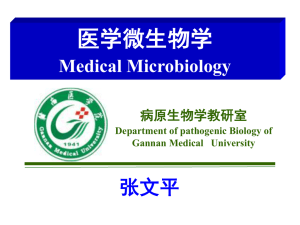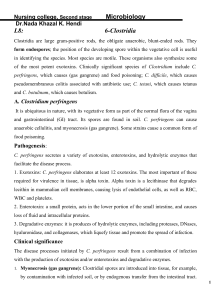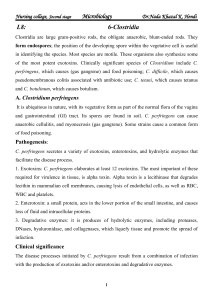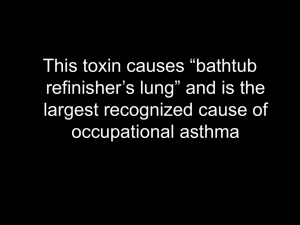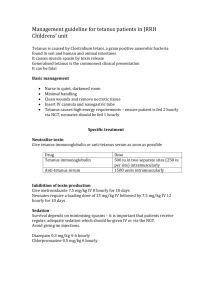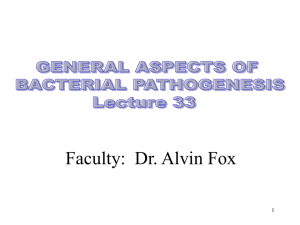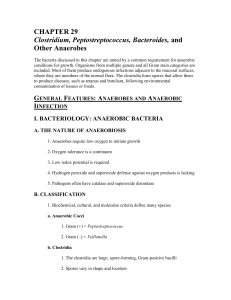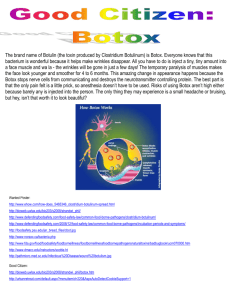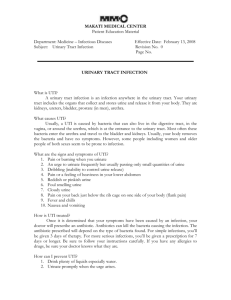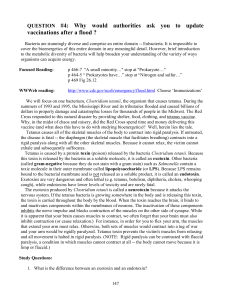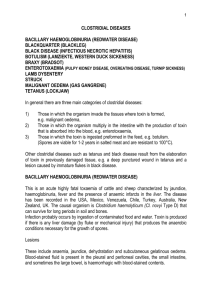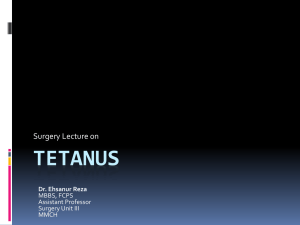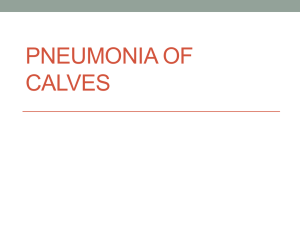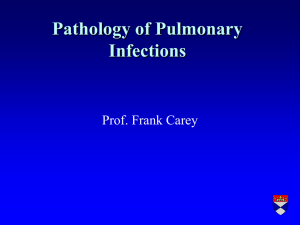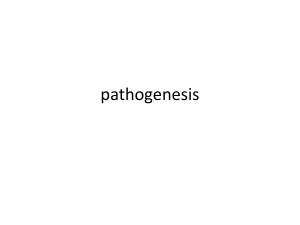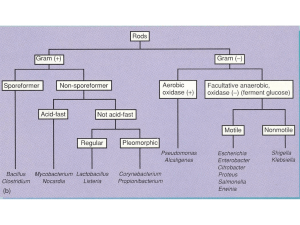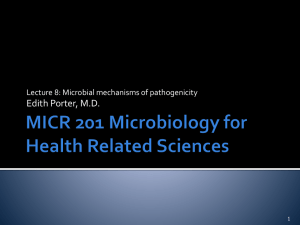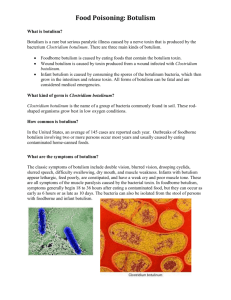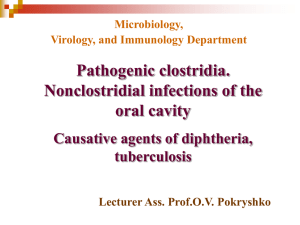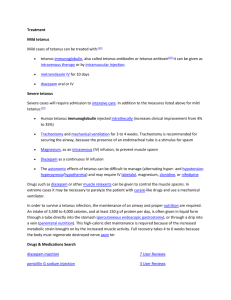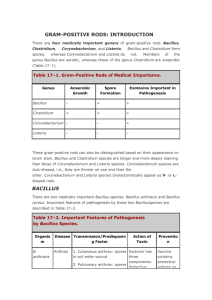Bauman Chapter 1 Answers to Critical Thinking Questions
advertisement
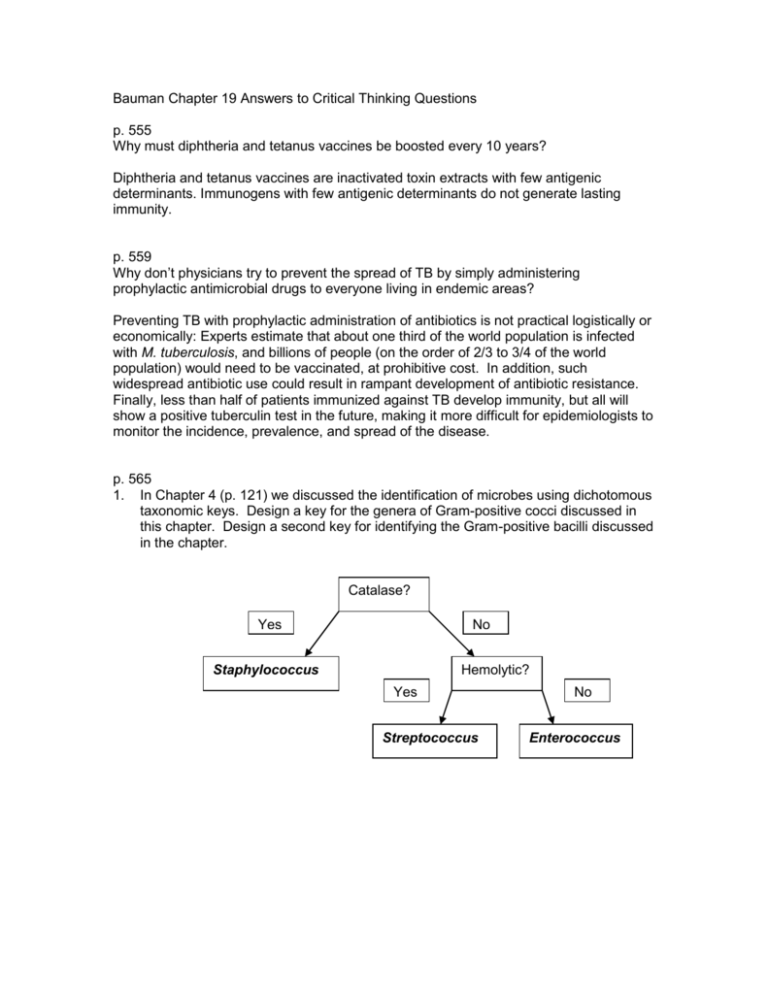
Bauman Chapter 19 Answers to Critical Thinking Questions p. 555 Why must diphtheria and tetanus vaccines be boosted every 10 years? Diphtheria and tetanus vaccines are inactivated toxin extracts with few antigenic determinants. Immunogens with few antigenic determinants do not generate lasting immunity. p. 559 Why don’t physicians try to prevent the spread of TB by simply administering prophylactic antimicrobial drugs to everyone living in endemic areas? Preventing TB with prophylactic administration of antibiotics is not practical logistically or economically: Experts estimate that about one third of the world population is infected with M. tuberculosis, and billions of people (on the order of 2/3 to 3/4 of the world population) would need to be vaccinated, at prohibitive cost. In addition, such widespread antibiotic use could result in rampant development of antibiotic resistance. Finally, less than half of patients immunized against TB develop immunity, but all will show a positive tuberculin test in the future, making it more difficult for epidemiologists to monitor the incidence, prevalence, and spread of the disease. p. 565 1. In Chapter 4 (p. 121) we discussed the identification of microbes using dichotomous taxonomic keys. Design a key for the genera of Gram-positive cocci discussed in this chapter. Design a second key for identifying the Gram-positive bacilli discussed in the chapter. Catalase? Yes No Hemolytic? Staphylococcus Yes Streptococcus No Enterococcus Yes Endospores? Strict anaerobe? Filamentous? Yes No Clostridium Bacillus Yes No Cords? Yes Mycobacterium No Acid-fast? Yes 2. No Cold tolerant? Actinomyces No Nocardia Yes Listeria No Snapping division? Yes No Corynebacterium Propionibacterium A few days after the death of a hospitalized child from an MRSA infection, another child, who had been admitted to the hospital with viral pneumonia, worsened and died. An autopsy revealed that the second child also died from complications of MRSA. By what route was the second child likely infected? What should hospital personnel do to limit the transfer of MRSA and other bacteria among patients? Methicillin-resistant Staphylococcus aureus (MRSA) can colonize the skin, and the second child was likely infected by contact with the skin or hands of a hospital worker. Hospital personnel need to be diligent about washing their hands before touching a patient, and surfaces that may be contaminated by skin contact need to be disinfected as frequently as is practical. 3. An elderly man is admitted to the hospital with severe pneumonia, from which he eventually dies. What species is the most likely cause of his infection? What antimicrobial drug is effective against this species? How could the man have been protected from infection? Is the hospital staff at significant risk of infection from the man? Which groups of patients would be at risk if the man had visited their rooms before he died? Streptococcus pneumonia is a frequent cause of potentially fatal pneumonia in the elderly. Erythromycin and cephalosporin are effective against S. pneumonia, and most strains are still susceptible to penicillin. The vaccine Pneumovax provides immunity to S. pneumonia and may have provided protection to the man, although the elderly do not always develop protective immunity. The hospital staff is not at great risk of infection as young and middle-aged healthy adults rarely contract symptomatic infection. Elderly persons and people with pre-existing respiratory disease would be at risk of infection had they been exposed to the man before he died. 4. Botulism toxin can be used as an antidote for tetanus. Can tetanus toxin be used as an antidote for botulism? Why or why not? No, tetanus toxin is not an antidote for botulism toxin. Botulism toxin blocks the neuron signal to muscle cells to contract, producing a flaccid paralysis, while tetanus toxin interferes with the inhibitory signals that allow muscle contraction; tetanus toxin cannot counteract flaccid paralysis. 5. A blood bank refused to accept blood from a potential donor who had just had his teeth cleaned by a dental hygienist. Why did they refuse the blood? Cleaning the teeth damages the soft tissue around the teeth, removing a barrier that otherwise prevents oral flora from entering the bloodstream. For a short period of time the persons’ blood carries potential opportunistic pathogens from the oral cavity.
